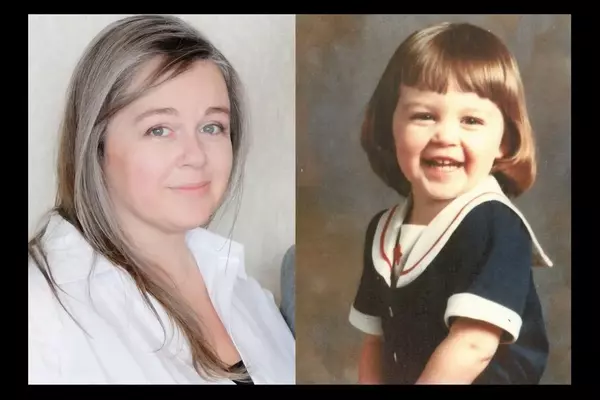
Of all the made-for-streaming Star Wars and Marvel spin-offs to shuffle off the Disney+ production line, few have arrived with less anticipation and lower stakes than Andor. A prequel to a prequel, the series explores the origins of Cassian Andor (Diego Luna), a Rebel Alliance captain introduced in the 2016 wartime heist film Rogue One: A Star Wars Story. Rogue One was set immediately before George Lucas’s original Star Wars films and ended quite decisively when – very old spoiler alert – Andor and his accomplices died in a bittersweet blaze of glory while stealing the plans to the Death Star.
When Rogue One became mired in reshoots, Lucasfilm tapped the Oscar-nominated writer-director Tony Gilroy, of Michael Clayton and the Bourne franchise fame, to salvage it. Gilroy was reportedly the one to point out that the most obvious and satisfying way to end the picture was by killing everyone. With Gilroy hired as the showrunner on Andor, that kind of bleak yet bold approach to storytelling sets the tone of the show: no one is safe and no sacrifice is too great.
We meet Cassian as a sharp, scrappy but self-interested young thief. He’s haunted by his past, harbours a healthy hatred for the Empire and becomes a prime target for recruitment by a shadowy Rebel organiser named Luthen (a stunningly double-faced Stellan Skarsgård).
After a slow but very watchable start, Gilroy has upped the ante week after week with a clarity of vision that makes Andor not only the best of Star Wars’s television slate, but one of the most compelling shows of 2022. Somehow, after 45 years of films about an intergenerational civil war between space fascists and resistance fighters, Andor offers an inventive and entirely refreshing take on what life is like under an authoritarian regime.
We see how a population is subjugated through economic exploitation, a creeping surveillance state and draconian policing that feeds a giant prison industrial complex. We see the Imperial regime reimagined as a series of workplace power struggles and meet the workers and collaborators who drive it: from an ambitious supervisor in the Imperial Security Bureau (Denise Gough) to a rank-and-file corporate security grunt (Kyle Soller), whose on-the-job zealotry is rooted in the small tyrannies of his home life.

No longer background extras waiting to be choked out by Darth Vader, these mid- and lower-level Imperials are motivated by ambition, self-preservation and bone-deep resentments. The threat they pose becomes more complex, insidious and recognisably human than any big, planet-killing laser or cackling Sith Lord – and even more terrifying for it.
We also see different kinds of rebellion from what we’ve seen in Star Wars previously, from disillusioned Imperial deserters to spontaneous acts of community solidarity. Then there are characters like Luthen and Senator Mon Mothma (Genevieve O’Reilly), who keep up appearances as members of the galaxy’s wealthy elite while secretly funding and organising the underground resistance. “I’ve given up all chance at inner peace; I made my mind a sunless space,” Luthen says in one show-stopping monologue evoking Rutger Hauer’s final scene in Blade Runner.
But some of the strongest stuff comes from the ground up, such as the episodes Andor spends with a small rebel cell laying low in the mountains on the planet Aldhani. Filmed in the Scottish Highlands, they could almost be mistaken for 16th century Jacobites if it weren’t for the occasional Tie fighter zipping overhead.

Among them is Nemik (Alex Lawther), a technical whiz with a sideline in political consciousness-raising. “It’s so confusing isn’t it, so much going wrong, so much to say, and all of it happening so quickly,” he tells Andor while explaining the Rebel manifesto he’s been drafting. “The pace of oppression outstrips our ability to understand it – that is the real trick of the Imperial thought machine. It’s easier to hide behind 40 atrocities than a single incident.”
Such moments of praxis add meat to the bones of Star Wars’s good v evil struggle and speak to any number of Earth-side fascist regimes. They also run rings around the leaden dialogue of its small-screen contemporaries (The Rings of Power) and big-screen cousins (The Rise of Skywalker).
The series saves its best for the back half of the season, when a fugitive Andor ends up in a massive floating labour prison, alongside a career-best Andy Serkis. With relatively few guns or guards, this sleek, bright-lit Alcatraz-in-space and its 5,000 human prisoners become a scale model for the galaxy; the men keep themselves in line through fear of punishment, hope for their eventual release and competitive quotas that atomise the workforce into ever-smaller units, unable to comprehend their own collective might.

Like the Aldhani arc, Gilroy’s team of writers – which includes Beau Willimon (House of Cards) and his brother Dan Gilroy (Nightcrawler) – let the tension stew over multiple episodes. When the tipping point arrives, it makes for 40 unforgettable minutes of television – and perhaps the most anti-establishment thing to come out of the House of Mouse since Christian Bale sang about solidarity and scab-bashing in 1992 kids’ musical Newsies.
For better or worse, Disney’s previous experiments with live-action Star Wars TV, from The Mandalorian to Obi-Wan Kenobi, have often felt like watching lifelong fans play with their action figures in a sandpit. From a de-aged Mark Hamill to a long-awaited rematch between Ewan McGregor and Hayden Christensen, some of their biggest moments have come from weaving in beloved characters and Easter eggs while tiptoeing around the established canon of a galaxy far, far away.
Gilroy, on the other hand, seems to care little about what came before him. Instead, he has focused on human drama, visually stunning set pieces and watertight writing. The result adds a weight of history to Cassian’s final destination — and gives Star Wars its first piece of universally excellent television.
The final episode of Andor airs on Disney+ on 23 November







